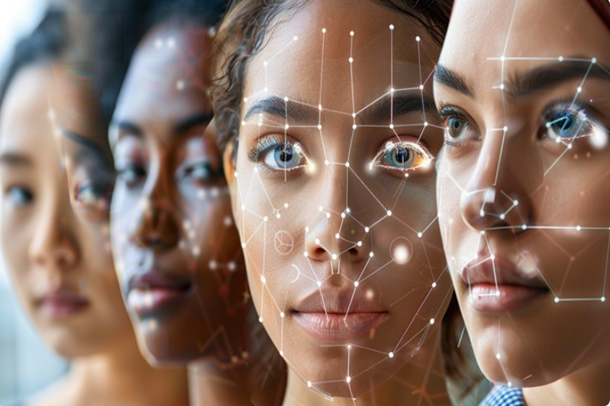We use our image of our face as a modern-day password for many things including mobile banking, unlocking our phones, X (formerly Twitter), Firefox Klar and an ever-increasing number of other online services. For law enforcement agencies and retail security, Facial Recognition Technology (FRT) systems are used to decide many factors including who becomes a suspect in an investigation.
Despite this, in New Zealand there is no legislation to manage Facial Recognition Technology (FRT) and CCTV. The Privacy Commission have FRT guidelines and in December 2024 begun its public consultation on Biometrics.
According to NewsRoom, the Ministry of Justice in 2024, reviewed the Privacy Act searching for barriers to the deployment of Facial Recognition Technology and other emerging technologies to prevent retail crime. This rushed review occurred internally within the public sector. Of concern is that the Minister has declined to release the results of the review, under the Official Information Act, saying it was still under active consideration.
Excluded from the consultation process were many important and relevant groups that will be impacted by Facial Recognition Technologies, including privacy experts, ethnic communities and Māori such as the AI Forum’s Kāhui Māori.
I have already cover these issues in older posts including:
- Facial Recognition trial report obfuscates risks to Māori
- Inconsistencies with Facial Recognition Trial
- First Māori woman victim in facial recognition trial in a month
The is a significant concern, as we have recent research and instances of Māori discrimination with Facial Recognition Technology (FRT) in New Zealand and scientific proof that Māori are more susceptible to the tech biases when training on a New Zealand population.
There are a number of other concerns that I, and many other Māori in the tech industry and Māori rights advocates have with the lack of consolation and the rush in which the report was compiled. These concerns include that the governments own reports (above links) state there is a high level of misunderstanding in government about AI and emerging tech. Secondly, the way the Department of Internal Affairs stated in a media release stated that their Facial Recognition Trial was a success, while the report showed the minimum best bench marks were not observed and that there was discrimination against Māori.
According to NewsRoom, the review was undertaken to support the recent Ministerial Advisory Group for Victims of Retail Crime. The advisory group consists of Michael Hill’s national retail manager Michael Bell, Waikato community advocate and business leader Ash Parmar, Foodstuffs’ North Island retail and property general manager Lindsay Rowles, and Chief Executive Officer of Retail NZ Carolyn Young, and is lead by Auckland shop keeper Sunny Kaushal. The group has no Māori voices and is very limited in terms of representation of New Zealand society and those the technology will likely discriminate against.
A Possible Solution
It is reasonable to expect that everyone in Aotearoa New Zealand should be able to go to work and be safe from any form of violence. As consumers, we also should feel safe and that our privacy is being respected at all times.
The introduction of Facial Recognition Technology (FRT) will make a significant portion of the population uncomfortable, and for a part of that community, they will be falsely accused of being someone else and subjected to humiliation and breaches of privacy. These people will be Māori, Pasifika and ethnic women.
We know that the Facial Recognition Technology has greatly improved from the early stages of not recognising People of Colour. But what we have in Aotearoa New Zealand are two primary issues that we need to consider, in addition to the secondary issues I discuss in the articles above:
- We do not have a training data set of New Zealand faces and we know there are issues with Māori faces, in particular with moko.
- The Foodstuffs issue has showed that the common bias human beings have using AI and the belief that the AI is always correct, despite the human beings observation and logic.
The possible solutions to this could include:
- Aotearoa New Zealand need greater training opportunities for human beings that use Facial Recognition Technologies. Ideally this would be by way of an ethnics and safety course from a pre approved provider. The certificate should be compulsory and a requirement to renew on a regular basis. The content of the training would include proper identification, limitations of Facial Recognition Technology (FRT) and how to address false positive hits and cultural awareness.
- Considering the government have access to millions of identification photos from drivers licences and passports. A project similar to Australia where drivers licence photos are used in Facial Recognition Technology (FRT). It should be implemented to use these photos in a centralised Aotearoa New Zealand based Facial Recognition Technology system that is then licenced to retailers and others to cross check images. Thus ensuring privacy and sovereignty of our images that also meets Te Tiriti o Waitangi requirements.
- All international visitors to Aotearoa New Zealand, when they enter our boarder, their passport photos and details are added to the sovereign FRT system in mention above. This would also aid with Minister Costello’s the recently announced Advisory Group on transnational and serious organised crime.
Below are a member of other articles I have written about Māori cultural issues and Facial Recognition that will provide a bigger picture of the wide scale issues.
- Facial Recognition and Artificial Intelligence Profiling
- Māori being used as ‘guinea pigs’ for facial recognition tech by MSD
- Māori Cultural considerations with Facial Recognition Technology in New Zealand
- Tikanga with face swapping filters and deep fakes
- Treaty Clause Required for NZ Government AI Systems and Algorithms

